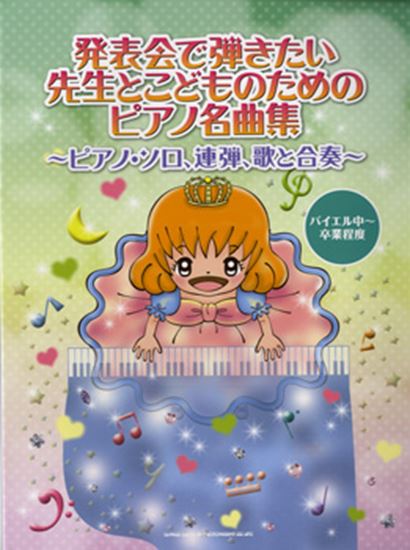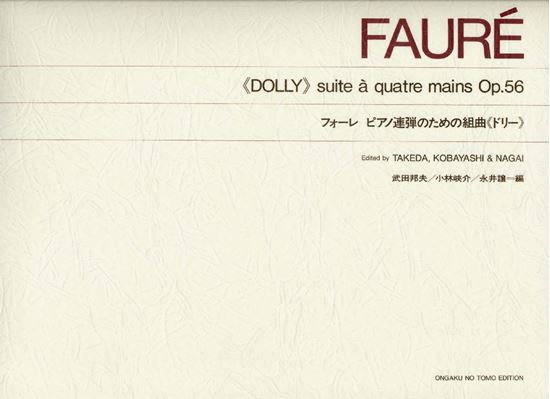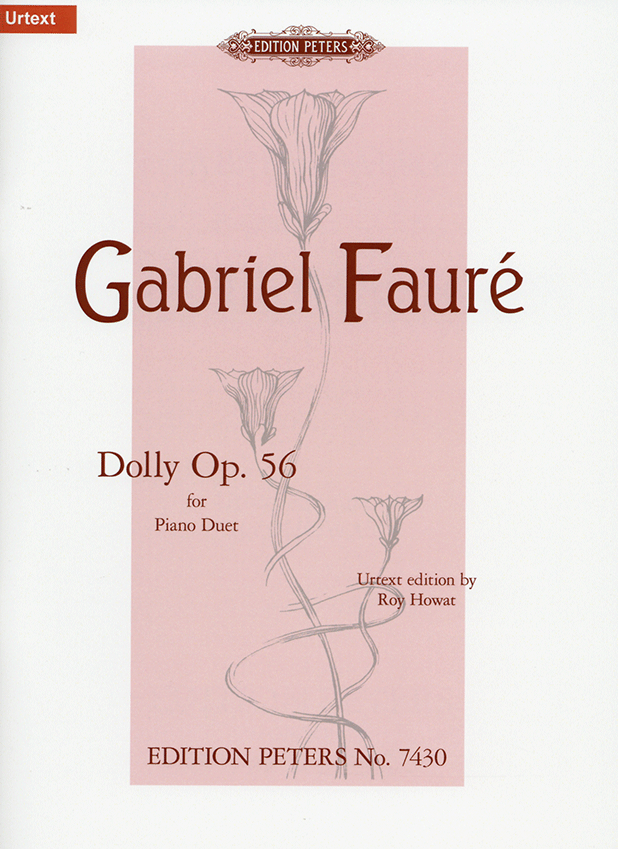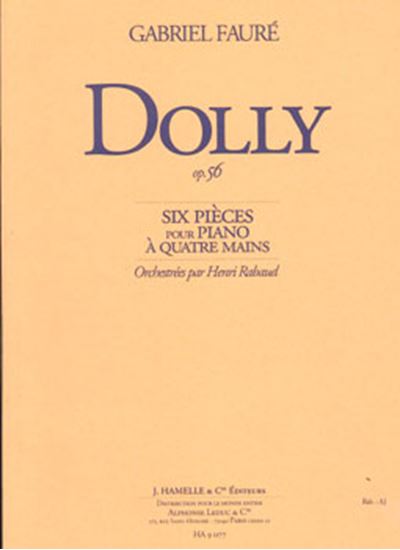Fauré, Gabriel : Dolly Op.56
Work Overview
Instrumentation:Piano Ensemble
Genre:pieces
Total Playing Time:15 min 00 sec
Copyright:Public Domain
Commentary (1)
Author : Saitoh, Noriko
Last Updated: October 1, 2007
[Open]
Author : Saitoh, Noriko
Dolly Suite, Op. 56
The title “Dolly” refers to the nickname of Hélène, the young daughter of the Bardac family, with whom Fauré was close at the time of composition. This suite was composed piece by piece each year to celebrate her birthday. All pieces are written in ternary form.
1. Berceuse (Lullaby)
The first piece, “Berceuse,” was composed in 1893 and published independently the following year. It is in Allegretto moderato, E major, 2/4 time. The middle section modulates to C major.
2. Mi-a-ou
The second piece, “Mi-a-ou,” is dated June 20, 1894. It is in Allegro vivo, F major, 3/4 time. Its rhythm is characterized by a combination of lightness and charm.
Regarding the title of this piece, the following is said: Hélène, to whom the suite was dedicated, had an older brother named Raoul. However, when Hélène, who had not yet fully developed her speech, tried to call him, it came out as “Messieu Aoul” (Monsieur Aoul). Fauré originally used this mispronunciation as the title. However, it is believed that the publisher, Hamelle, changed it to the current title.
3. Le Jardin de Dolly (Dolly's Garden)
The third piece, “Le Jardin de Dolly,” is dated January 1, 1895. It is in Andantino, E major, 3/4 time. The melody is particularly memorable.
4. Kitty-Valse (Kitty Waltz)
The fourth piece, “Kitty-Valse,” is dated June 20, 1896. It is in Tempo di valse, E-flat major. The occasionally inserted ascending melodic figures are prominent.
This piece was also originally titled “Ketty-Valse.” Ketty was the name of the dog owned by Raoul, Hélène’s aforementioned brother. Therefore, contrary to the title, there were originally no cats in this suite.
5. Tendresse (Tenderness)
The fifth piece, “Tendresse,” was composed in 1896. It is in Andante, D-flat major, 3/4 time. The notation of the opening four-bar melody, utilizing accidentals, is ingenious.
6. Le Pas espagnol (Spanish Dance)
The composition year of the sixth piece, “Le Pas espagnol,” is said to be either 1897 or 1896. It is in Allegro, F major, 3/8 time. Its lively rhythm is characteristic.
Publication and Premiere
The entire suite was published by Hamelle in 1897 and premiered the following year in Paris by Édouard Risler and Alfred Cortot (Cortot also arranged this suite for solo piano).
Relationship with Debussy's Children's Corner
Furthermore, “Dolly” is sometimes evaluated alongside Debussy’s “Children’s Corner.” This is because Hélène’s mother, Emma, later became Madame Debussy, and “Children’s Corner” was composed for her child, Chouchou, making them, in a sense, literal sister works.
Movements (6)
Arrangements & Related Works(1) <Show>
PTNA & Partner Channel Videos(17items) View More
Sheet MusicView More
Scores List (32)

(株)全音楽譜出版社

カワイ出版

(株)全音楽譜出版社

(株)全音楽譜出版社

(株)全音楽譜出版社

カワイ出版

(株)春秋社

(株)シンコーミュージックエンタテイメント

(株)シンコーミュージックエンタテイメント

KMP(ケイ・エム・ピー) ケイエムピー

(株)シンコーミュージックエンタテイメント

(株)シンコーミュージックエンタテイメント

ミュージックランド

(株)シンコーミュージックエンタテイメント

(株)シンコーミュージックエンタテイメント

(株)シンコーミュージックエンタテイメント

(株)シンコーミュージックエンタテイメント

(株)全音楽譜出版社

(株)全音楽譜出版社

(株)音楽之友社

(株)ドレミ楽譜出版社

(株)全音楽譜出版社

(株)全音楽譜出版社

(株)全音楽譜出版社

(株)音楽之友社

(株)学研プラス

(株)ドレミ楽譜出版社

Neil A. Kjos Music Company

Neil A. Kjos Music Company

ミュッセ















